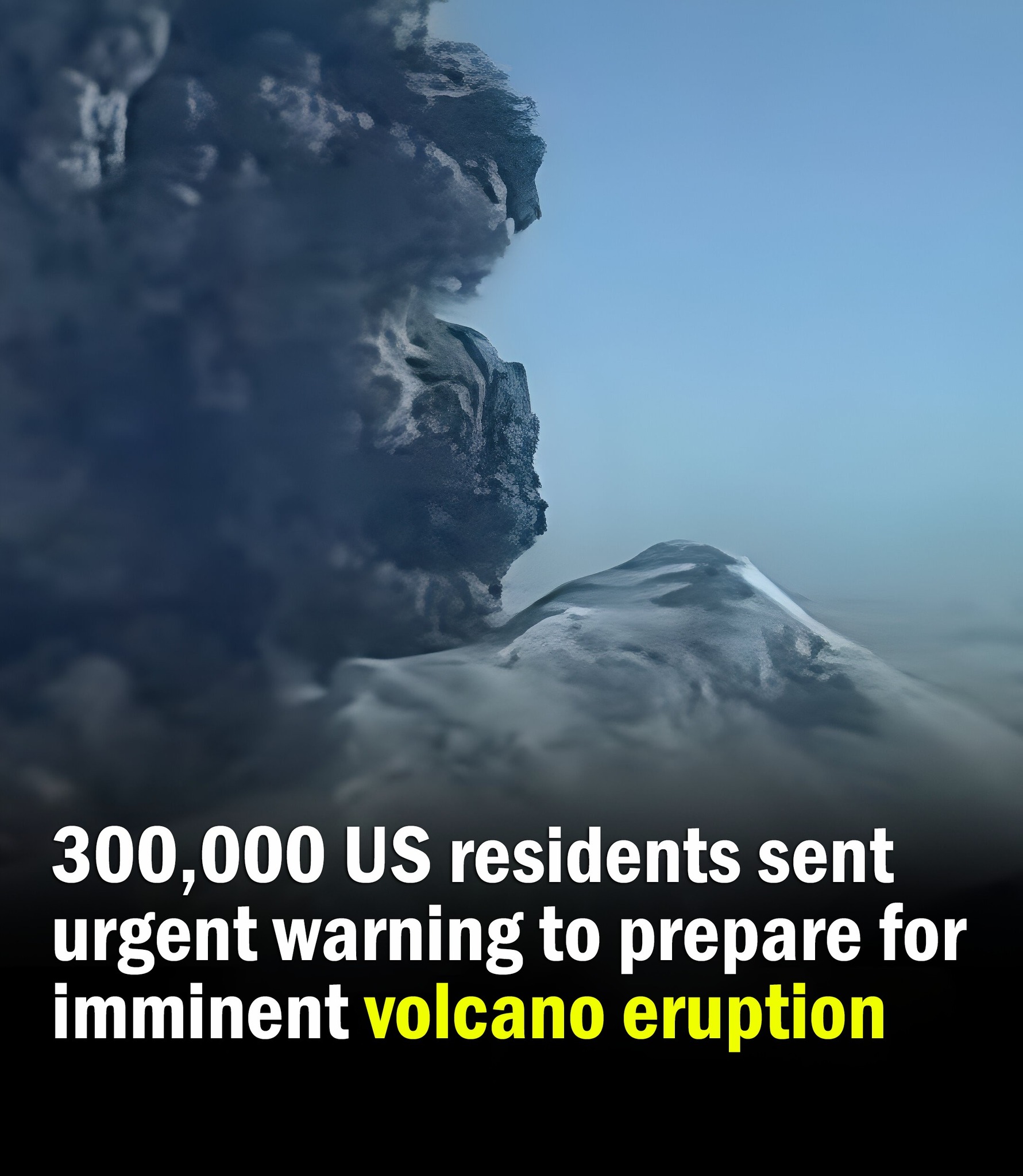Mount Spurr, a towering 11,070-foot stratovolcano located 81 miles west of Anchorage, Alaska, has started stirring after decades of silence, raising serious concerns for the nearly 300,000 residents potentially in harm’s way. For years, the snow-capped peak of Mount Spurr stood quietly, barely noticed against the rugged Alaskan backdrop, but now scientists are keeping a very close eye on it as early signs of a possible eruption emerge.

The Alaska Volcano Observatory (AVO) has recorded over 3,400 earthquakes beneath Mount Spurr within the past year alone, and between February and March, the mountain experienced over 100 tremors each week, suggesting that magma could be pushing upward toward the surface. This is not the first time Mount Spurr has posed a threat; in 1992, the volcano erupted three times, sending massive ash clouds over Anchorage, severely disrupting air travel, and causing numerous health issues, memories that many locals still recall vividly today. As the threat of another eruption looms, Alaskans are once again preparing by buying masks, goggles, air purifiers, and assembling emergency kits while anxiously tuning in for the latest updates, knowing that the situation could escalate at any moment.
The surge in earthquake activity has drawn widespread attention because a pattern like this often signals magma movement deep underground, a phenomenon that could soon lead to a volcanic eruption. Each earthquake represents growing stress within the earth’s crust as magma exerts pressure upward, and although the tremors vary in size and depth, collectively they form a troubling pattern strikingly similar to what happened before the 1992 eruption. Even though the volcano’s official alert level remains moderate, scientists have ramped up their monitoring efforts, using seismometers to track ground movements, satellites to detect any changes in the volcano’s shape, and gas detectors to measure increasing levels of sulfur dioxide, another key sign that an eruption could be close.
During the 1992 event, Mount Spurr blasted ash more than 12 miles into the atmosphere, forcing flight cancellations, closing schools and businesses, and covering Anchorage with a thick, choking layer of ash, and today’s seismic activity has many experts worried that history could repeat itself. For now, the region remains on high alert, with researchers maintaining 24-hour surveillance and ready to issue immediate warnings should the situation worsen. Health risks are also a major concern if ashfall returns, as volcanic ash is made of tiny, sharp, abrasive particles that can severely irritate the lungs, eyes, throat, and nose, especially for those with asthma or other respiratory issues, unlike the soft ash produced by burning wood.
During the 1992 eruption, ash inhalation caused widespread respiratory problems, prompting today’s health officials to advise residents to stockpile N95 masks, seal windows and doors, and prepare to stay indoors if necessary. Beyond health impacts, volcanic ash can also clog engines, damage cars, contaminate water supplies, and create dangerous driving conditions by drastically reducing visibility. Fortunately, with good preparation, many of these risks can be minimized, and local authorities emphasize that simple measures like staying indoors, using air filters, and wearing protective gear can go a long way in keeping people safe. Past eruptions offer important clues about what to expect; Mount Spurr erupted in 1953 and again in 1992, each time causing widespread disruption, and because it sits just across Cook Inlet, strong winds can easily carry ash over to Anchorage, keeping the city squarely in the danger zone. Scientists are carefully studying patterns of past ashfalls, seismic activity, and gas emissions to better understand and predict how a future eruption might unfold, and while no one can pinpoint exactly when the next eruption will occur, the evidence suggests that Mount Spurr remains a very real threat. Meanwhile, local communities stay alert while experts continue to watch closely, with emergency officials and scientists sharing updates, issuing safety tips, and working together to ensure a swift response if necessary. Schools and businesses remain open, but residents are paying close attention to news reports and emergency alerts, balancing their daily lives with cautious vigilance. Living near a volcano means accepting a constant tension between curiosity and caution, and as one local resident put it, “When the ground talks, we listen.” While Mount Spurr remains quiet for now, the restless forces below the surface continue to build, and whether the volcano erupts tomorrow or years from now, one thing is certain—Alaska is watching and ready.





